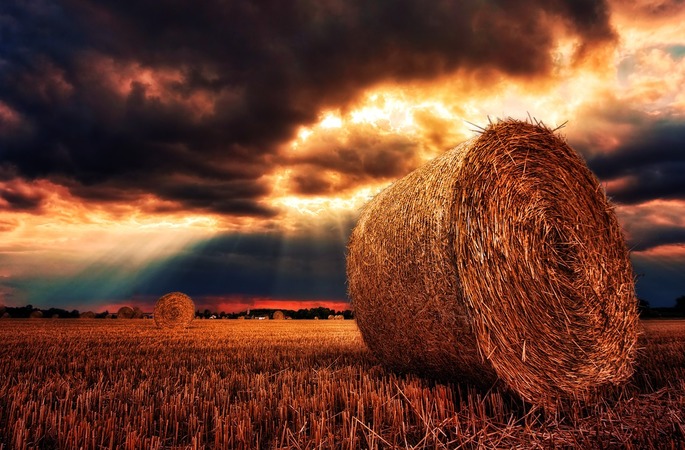I have always been fascinated by ancient history that brings to the fore the lives of people who walked the land, were flesh and blood like us, who lived in the very lap of mother nature, yet were different and mysterious in umpteen ways.
When we get the opportunity to step into the regions inhabited by them once upon a time, tucked away in remote corners of forests and formidable terrains, what greets us will be an eerie emptiness.
A stillness and a silence, embedded with real-life stories of people who lived in the very lap of Mother Nature and sought to preserve and protect her with reverence.
Last summer, I was in Minneapolis (Minnesota State, USA) and when we decided to take a short family vacation to Wisconsin Dells in the neighbouring Wisconsin State, famous for its water and theme parks, I didn’t think the jaunt would turn out to be a memorable experience.
The idyllic surroundings of lush green landscapes and woods that welcomed us as we arrived at our holiday resort was a curtain-raiser to the unfolding of a magnificent panorama of nature’s bountiful landscape.
The entire downtown area of the city was bustling with a flurry of activity and fun: people frolicking, playing water games and riding in theme parks.
The global population there was a sight to watch. A marvellous fusion of various ethnicities, ages, sizes, skin tones, features and with everyone going about blissfully comfortable in their two-piece and one-piece swimming gear.
I was the odd one out there, in full attire.
I kept cool, since I have always had a silent fear of vast expanses of water, and, moreover, was not prepared to get wet and shivering. I was happy to watch the enthusiasm of the people scurrying along.
What really enthralled me was a ride on land and water, called Duck Tour, that took us through waterways and forests, providing glimpses into the primitive history of the land that was home to tribal communities, centuries ago.
The vehicle that took us on a land-and-water tour was an amphibious one, aptly called ‘The Duck’. These amphibious vehicles were used to transport troops and supplies across land and waters during World War II. After the war, they were sold as army surplus and brought to Wisconsin Dells for use in sightseeing.
The Duck Tour was a virtual journey into the echelons of the primitive past, through dense forest areas, down steep ravines, around rocky outcroppings, through an arboretum of tall birch and white pine and thousands of lush green ferns.
The beauty of virgin nature not trampled upon by unscrupulous elements was all around us.
The Duck starts its journey as it enters the famous 230-mile long Wisconsin River, which converges into the mighty Mississippi River, and takes us down an old water highway that had shaped the colourful history of the region.
The region had been home to Native American tribes and their chieftains, who are remembered for their enormous courage and indomitable spirit, and carved a niche for themselves in the history of the land.
It warmed our hearts to hear about their struggles to survive with dignity, in the face of relentless battles against settlers and invaders, before vanishing from the face of the Earth.
As we cruised along, we were transported to a much more recent period of history.
The tour guide pointed to a few broken pillars along the shoreline that stand as silent testimonials to a lost city, called Newport, which oscillated between hope and despair before meeting its downfall.
It was once a promising city, with people swarming to it with hopes of thriving through the prospects of a railroad bridge being built there, and when it was called off, they moved away en masse, and it turned into a ghost city almost overnight.
In 1900, a forest fire consigned the entire city to flames, leaving only Dawn Manor, a magnificent structural masterpiece built by Captain Abraham Vanderpoel, a friend of Abraham Lincoln.
The quiet lapping of the waves upon the shore reverberated with the unexplainable heaviness of our hearts.
The Duck now climbs out of the Wisconsin River and traverses the forest paths before again plunging into Lake Delton, an artificial lake and a man’s brainchild.
In 1926, W.J. Newman, a politician and nature-lover, bought 3000 acres of land in and around the devastated city of Newport and his dream of an artificial lake took shape as the 250-acre Lake Delton, which, for 80 years, was the centre of Wisconsin Dell’s flourishing tourism industry.
In 2008, a torrential downpour caused a major breach in the lake, and all its 600 million gallons of water drained into the Wisconsin River, some 800 feet away.
The combined efforts of the residents and the Government agencies got the lake refilled and restored in all its glory as the recreational hub of Wisconsin Dells.
In 1942, Dawn Manor was bought by a connoisseur of art and nature, Madame Helen Raab, wife of a famous artist and daughter-in-law of a shipping tycoon.
She restored its original beauty and enhanced its historical value by decorating the interior with rare art pieces and paintings, acquired from around the world.
She purchased 600 acres of land, in and around this place, solely to preserve the untamed beauty of the wilderness.
When Madame Raab decided to sell these areas of lush green forests to the boat company that runs the now famous Duck Tours, she was very dedicated to preserving the forests and handing the land over to posterity with all its primitive and virgin beauty unharmed and intact. She took an undertaking to the effect that the primitive natural wilderness would be preserved for generations to come.
Accordingly, the Duck Tours run by this company traverse this wilderness on trails that were already in existence: primitive city streets, ancient stagecoach runs, roads and pathways.




Lovely read!!Took me on an effortless vacation to Wisconsin!